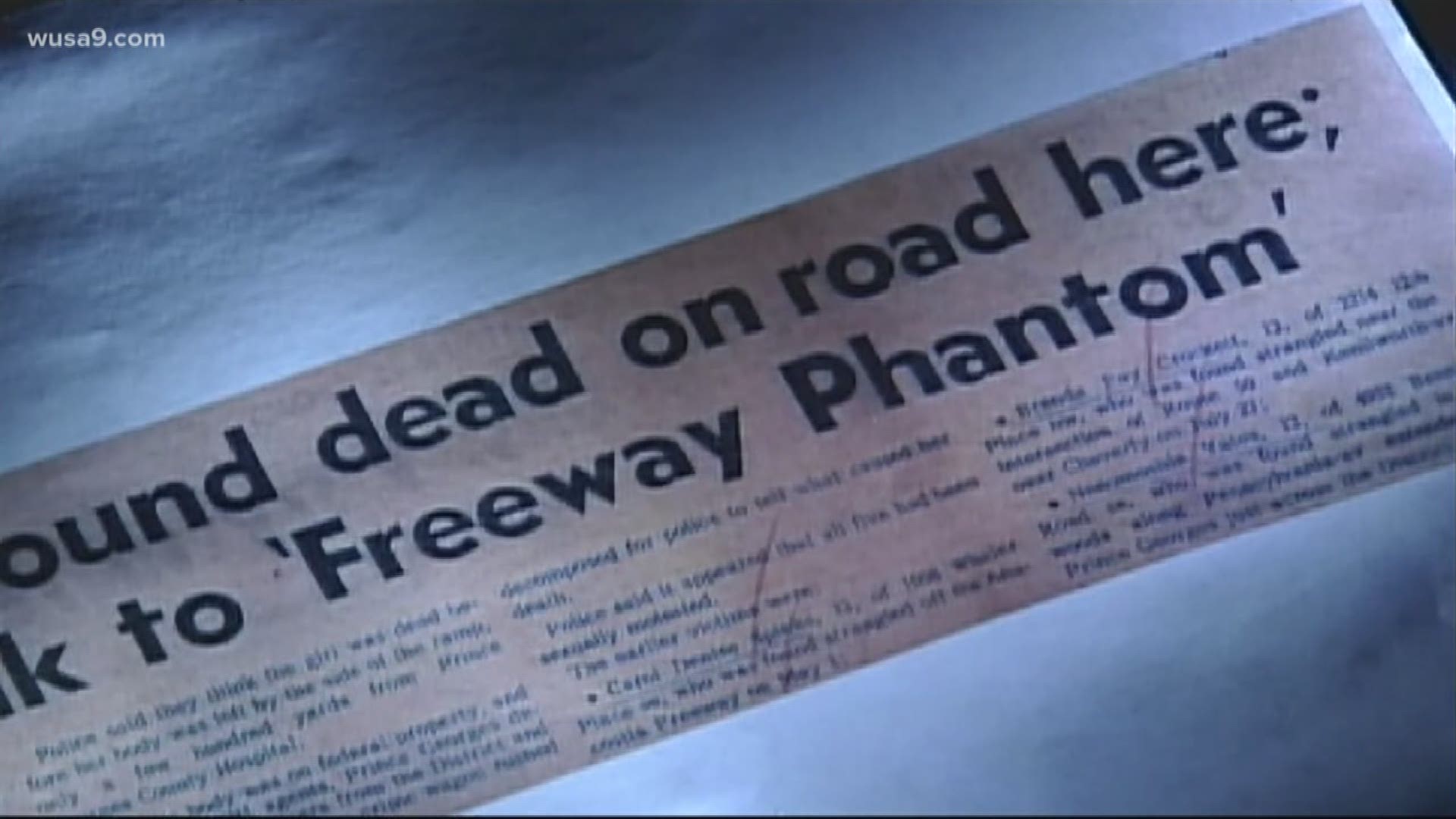WASHINGTON — Nearly a half a century ago, a serial killer prowled the streets of D.C. and Prince George's County.
Police say he abducted and murdered at least six young black girls and dumped their bodies on the side of the road. The media dubbed him the Freeway Phantom.
And he’s never been caught.
The best-selling authors of the new book “Tantamount” are hoping to finally solve the case.
"We definitely think it can be solved. Somebody knows something," Victoria Hester, who spent two years researching the case with her father Blaine Pardoe, said.
They are convinced someone could still find a key piece of evidence that will lead police to the killer.
"He kept textbooks from one of the girls, curlers from another girl, shoelaces from another girl," Pardoe said. "Some family member may stumble across those things and say, why did he keep this junk?"
On April 25, 1971, Carol Spinks, 13, went out to buy groceries. Six days later, police found her body dumped along I-295 -- barefoot – and she’d been sexually assaulted and strangled.
Her sister Evander still talks to her every day.
"Basically, I just tell her I hope she’s ok. I’m sure she is," she told WUSA9 in a 2008 interview.
RELATED: Cold Case: Freeway Phantom - Part 1
Three months after the first murder, detectives say the phantom struck again, abducting, raping and murdering 16-year-old Darlenia Johnson. Two people called police after spotting her body, but she wasn't found until 11 days later.
Two officers in a patrol car drove by, didn’t see anything, and called the dispatcher and said, "10-8, we didn’t find anything," according to Pardoe.
Parents warned children in Southeast. So police said the killer went Northwest and grabbed 10-year-old Brenda Crockett. Then Northeast for 12-year-old Nenomoshia Yates. 18-year-old Brenda Woodward was last seen alive at a bus stop on M Street, Northeast, according to police.
A year later, investigators said the phantom went back to Southeast for 17-year-old Diane Williams, whose sister became a D.C. police lieutenant.
"I want him to come out and say, I did it," Patricia Williams told WUSA9 in a 2008 interview.
RELATED: Cold Case: Freeway Phantom - Part 2
Investigators found a note in Brenda Woodward’s pocket taunting them: "This is tantamount to my insensitivity to people, especially women. I will admit the others when you catch me, if you can!"
"Most of these girls were running errands for their parents, innocently playing outside, innocently walking to the store, and they’re just gone," Hester said.
The authors say that the killer bathed his victims before disposing of their bodies.
"It could be he was trying to wash himself of the guilt from killing these young girls, but it’s also possible he was aware of police techniques in the 1970s, and he was trying to wash away any trace evidence, not realizing that when he threw the girls on the floor, he was picking up trace evidence," Pardoe said.
Police found green rayon fibers on the girls that they suspected came from a bath rug or other carpet.
The geographic epicenter of the crimes -- the anchor point of the where the victims lived, where they were abducted, and where their bodies were found -- was St. Elizabeth’s mental hospital.
"He had to know this neighborhood," Hester said. "He had to. He really did."
The authors name a number of possible suspects, but they think the most likely was a former patient here, a convicted killer named Robert Askins.
"Robert Askins spent time here in St. Elizabeth’s," Pardoe said. "He had a problem with women that went back to the 1930s. He tried to kill women, and successfully killed women."
Police could never gather enough evidence to charge Askins, and he died in prison a few years ago.
But after nearly five decades, Evander Spinks still hopes to tell her sister one more thing.
"That we know who it is," Evander said.
Spokeswoman for the Prince George's County Police Department, Jennifer Donelan, said the department is still actively investigating the murders.
But in D.C., spokeswoman Alaina Gertz said the cases were purged by the Metropolitan Police Department years ago and are no longer active investigations.
Retired investigators say much of the evidence has been lost or misfiled, and it’s not clear if there’s enough left to recover the killer’s DNA.

